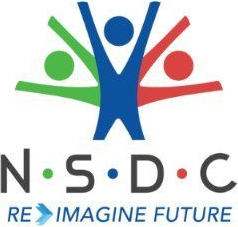Micro-Retirement: A Fix or a Fad?

The traditional linear career path has become increasingly outdated, especially among younger generations. Instead of adhering to steady employment with one company, Gen-Z professionals are now pioneering a novel approach known as “micro-retirement.” This essentially involves taking intentional breaks from careers to pursue personal interests, travelling, learning new skills, or simply recharging – both physically and spiritually. As early burnout becomes more prevalent, micro-retirement offers a viable solution to restore the much-needed balance in life.
What is the basic idea?
The idea is not really novel. Micro-retirement can be seen as a rebranding of the more traditional sabbatical. However, it comes with distinct differences. Unlike sabbaticals, which are often employer-sanctioned and may come with pay and job security upon return, micro-retirement is primarily a lifestyle choice made by individuals. It allows them the freedom to step away from the rat race – but without the assurance of income or job guarantees, which can be a double-edged sword. While it empowers workers to prioritise mental health and personal fulfilment, it also requires them to be financially prudent and plan carefully.
A Brave New World
Gen-Z’s approach to work is markedly different from that of previous generations. Research indicates that 76% of Gen-Z workers prioritise work-life balance over salary. This shift reflects a broader cultural change; younger workers are less inclined to sacrifice personal time for career advancement. Instead, they seek flexibility and autonomy in their professional lives.
A recent Pulse study revealed that 75% of Gen-Z workers prefer flexible work arrangements, underscoring their desire to shape their own career paths. Micro-retirement aligns seamlessly with these aspirations. It provides an avenue for Gen-Z professionals to explore other interests without jeopardising their long-term career goals. Such breaks not only allow for personal growth but also serve as a mechanism to combat the chronic stress that corporate professionals now routinely experience.
Does it do any good?
The advantages of micro-retirement extend beyond individual well-being; they also positively impact organisations. Here are some key benefits:
- Better health and lower burnouts: Taking regular breaks is linked to lower burnout rates and better mental health. Employees who engage in self-care and leisure activities during micro-retirement often return to work rejuvenated and more productive.
- Skill upliftment: Micro-retirement can serve as a critical period for skill enhancement. Individuals can use this time for professional development, online courses, or even side projects that suits their interests. This not only enriches their skill set but also increases their overall value in the job market.
- Greater loyalty: Organisations that support micro-retirement can garner greater loyalty among the workforces. By demonstrating flexibility and trust, companies can build a stronger sense of commitment among employees, particularly those from Gen-Z.
Where do the companies come in?
Some may dismiss the micro-retirement trend as a passing whim of youth. However, businesses should recognise the practical implications of ignoring this shift. With Gen-Z and millennials now making up significant portions of the workforce, companies face high turnover rates and the associated costs of employee replacement – estimated to be between half and twice an employee’s salary. As micro-retirement becomes more popular among Gen-Z workers, companies must adapt their policies to attract and retain talent.
Micro-retirement can be treated similarly to parental leave, allowing for work distribution among colleagues while maintaining productivity. Implementing a structured micro-retirement policy could help mitigate the animosity that sometimes arises among employees when one person takes an extended leave.
Here are some strategies organisations can consider:
- Accept and allow flexibility: Companies should implement formal micro-retirement policies, allowing employees to take short, paid breaks regularly. This framework should ensure fairness and consistency across the organisation.
- Encourage learning and upskilling: Organisations should view micro-retirement as an opportunity for employees to engage in professional development. Encouraging skill-building during these breaks can enhance the overall capabilities of the workforce.
- Turn work-life balance into a practice: Companies need to cultivate an environment that values work-life balance. This includes modelling healthy work habits, celebrating employees who take advantage of micro-retirement, and providing mental health resources.
- Look at breaks as a retention strategy: Offering micro-retirement as an employee benefit can distinguish a company in a competitive labour market. It demonstrates a commitment to supporting the evolving needs of younger professionals.
The roadblocks
While the concept of micro-retirement is appealing, it does come with challenges. Many young workers may feel anxious about stepping away from their careers without a guaranteed job upon return. Financial concerns and the fear of losing out on opportunities can create significant barriers. One thing is certain: this is best suited for the truly motivated and resourceful who can take on the world – and not for the faint-hearted!
However, as more individuals share their experiences on social media, the stigma surrounding breaks from work may diminish. The potential for renewed creativity and clarity gained during these periods can outweigh the risks. As one self-employed millennial shared, stepping away from routine sparked new ideas and prompted necessary changes in both business and personal life.
—
The new generation values flexibility, work-life balance, and opportunities for personal growth – essentials for any employer looking to attract top talent. The rise of micro-retirement among Gen-Z workers signals a fundamental shift in career expectations and priorities. By understanding and supporting this new approach, companies can create a more engaged workforce that is better positioned for long-term success.
Acknowledgements:


